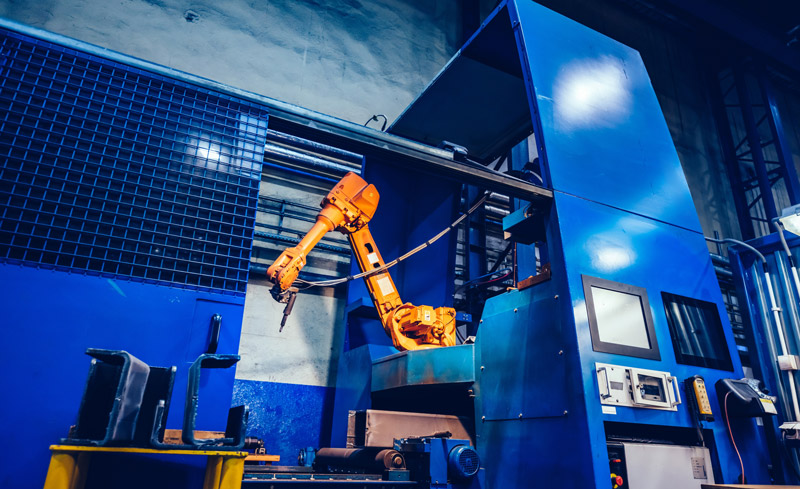Challenge #12
Robotics
Remote Control and Monitoring in Substations
Electrical substations are critical infrastructures for electricity distribution and transmission. The operation of these systems requires the handling of various physical controls and the monitoring of measurement indicators. These processes often involve operators traveling to remote locations. We aim to develop technological solutions that enable the remote manipulation of physical controls and the remote oversight of measurement systems.

Context
Electrical substations are critical infrastructures for electricity transmission. Their operation requires both the handling of physical controls (such as knobs, buttons, levers, locking systems, among others) and the constant monitoring of measurement indicators and parameters. Traditionally, these processes involve the physical presence of operators in remote and potentially hazardous environments.
The challenge focuses on developing a comprehensive technological solution that enables both the remote manipulation of physical controls in substations and the remote monitoring of measurement systems. This solution should enhance operator safety, reduce the need for physical travel, and optimize the efficiency and accuracy of real-time operations.
By combining advanced robotics and image recognition systems, the goal is to create an integrated solution that provides precise remote control and continuous monitoring.
The Challenge
The goal is to develop technological solutions for the remote control and monitoring of electrical substations through robotic systems and image recognition. This includes:
- Developing innovative technological solutions that allow operators to remotely manipulate the control systems of electrical substations. This includes devices such as:
- Adjustment knobs
- Touch-sensitive push buttons
- Rotational levers
- Pressure-lock systems
The solutions should be capable of performing these operations remotely, considering the ability to move within substation rooms, on countertops, inside racks, or in the substation yard.
- Developing technological solutions that enable the remote supervision and real-time reading of measurement systems in electrical substations, focusing on:
- Remote monitoring of electrical parameters—reading data from meters and operational controllers, including counters, levels, displays, signals, and indicator lights present on substation panels and equipment.
- Implementing secure and resilient communication technologies for real-time data transmission.
- Analyzing and visualizing data in a clear and accessible manner for operators.
Key Focus Areas for Solutions
- Remote Manipulation of Physical Controls
- Develop robotic devices capable of remote movement and interaction with knobs, buttons, and locking systems, using intuitive interfaces that emulate physical interaction.
- Utilize technologies such as IoT and robotic actuators to enable precise and secure remote control, including programmed commands and automatic adjustments.
- Image Recognition and Remote Monitoring of Indicators
- Implement artificial vision systems and OCR (Optical Character Recognition) to monitor and read data on measurement panels, counters, and other visual indicators, including the ability to move between points within the substation or control rooms.
- Develop centralized platforms that collect and display real-time data, with capabilities for internal movement within the substation, analysis, and alert generation to anticipate failures and facilitate predictive maintenance.
- Cybersecurity and Communication Resilience
- Incorporate secure and low-latency communication technologies (such as 5G or low-power networks) to ensure real-time transmission of data and control commands, even in adverse conditions.
- Apply advanced authentication and encryption mechanisms to protect the system from unauthorized access or cyber threats.
- Automation and Data Analysis
- Integrate data analysis algorithms and machine learning to predict and prevent failures in control and monitoring systems.
- Facilitate the automation of common tasks and routine monitoring, improving operational efficiency and reducing the need for physical interventions.
Guiding Questions
-
- What innovations in robotics and computer vision could enable precise remote interaction with substation controls?
- How can we design control interfaces that allow operators to navigate within a substation and remotely manipulate knobs, push buttons, touch controllers, and rotational levers while maintaining precision and control over actions?
- What emerging technologies (IoT, robotics, augmented reality, among others) can be utilized to replicate physical interaction with substation controls remotely, ensuring an intuitive and effective user experience?
- How can we ensure the security of remote manipulation solutions, preventing unauthorized access or malicious interventions, through advanced authentication and encryption mechanisms without compromising operational safety?
- How can emerging technologies (IoT, artificial vision, OCR, 5G, smart sensors) be integrated to efficiently monitor current measurement systems in electrical substations remotely?
- What technologies can guarantee the reliability and security of remote data transmission in industrial and challenging environments like substations?
- How can the monitoring of controllers and counters in substations be automated to reduce the need for manual intervention?
- How can data analytics be applied to predict failures and enable predictive maintenance, reducing downtime and operational costs?
- How can the scalability of this solution be ensured so that it adapts to substations of varying sizes and locations?
Key Objectives
- Operational Safety: Enable operators to remotely and securely manipulate and monitor control and measurement systems.
- Efficiency and Precision: Optimize response times and enhance the accuracy of remote operations, minimizing the risk of errors and accidents.
- Reliability and Scalability: Ensure that solutions are robust against adverse network conditions and adaptable to substations of various types and scales.

